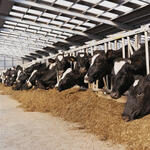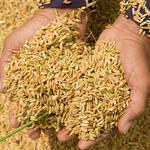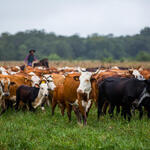- Date: 24 May 2023
- Author: Martha Stevenson, Senior Director of Strategy and Research
Today, the Science Based Targets Network released its first version of nature targets. This is a significant step in uniting the world’s leading companies to stabilize the climate, preserve freshwater resources, regenerate land, secure healthy oceans, and support biodiversity.
We know that business as usual can’t continue. We are exceeding planetary boundaries – the points of no return for nature, climate, and humanity as we know them. You only need to turn to the news to see the devastating effects: wildfires in the boreal, droughts in eastern Brazil, and the empty forests of the Congo, once teeming with biodiversity. These harbingers of what’s to come reflect an ecological system out of balance.
- Date: 16 February 2023
- Author: Katherine Devine and Emily Moberg, WWF Markets Institute
The news is full of headlines about companies making commitments to reduce their greenhouse gas (GHG) emissions. Given the alarming pace of climate change and governments’ failure to slow it, companies’ contributions are vital to both the planet and their bottom lines. Companies have a stake in mitigation efforts as climate change presents a real risk to their operations and infrastructure. However, behind all of the ambitious goalsetting and initial progress lies a secret that’s ripe for exploitation: product-level GHG accounting is so fragmented and flexible that it’s incredibly difficult to hold companies and sectors accountable for emissions reductions. What’s more, because companies can choose which methodologies to use and companies in adjacent industries may choose different methodologies (think: beef and leather), some emissions are simply not being accounted for once we get to the end products.
- Date: 09 February 2023
As fans from all over the world head to Arizona this weekend for football’s big event, thousands of sustainability professionals won’t be far behind. Greenbiz23 – an annual event for sustainability leaders – kicks off on Tuesday, February 14. Once again, WWF experts from across the organization will lead discussions, provide insights, and connect with like-minded individuals, looking to achieve sustainability solutions at a scale and speed that matters.
If you’re participating in GreenBiz23, we invite you to join an event or session featuring WWF experts and of course come say “hello” during conference networking breaks. Here’s where you can find us:
- Date: 23 November 2022
- Author: Sheila Bonini, Senior Vice President, Private Sector Engagement
Having just returned from COP27 in Egypt, I would like to share my reflections on the state of the climate dialogue. Food was back on the agenda this year in a major way. It’s an area where business can support solutions around sustainable agriculture, resilience, and land-use change. And while there was some progress overall at COP27, including a welcome step towards a loss and damage fund to help vulnerable countries hit hard by climate disasters, my biggest takeaway is that climate actions aren’t moving quickly enough.
Climate change could depress growth in global agriculture yields up to 30% by 2050. At COP27, we introduced, It’s Time: Solving the Great Food Puzzle for a 1.5° C Future, A WWF Food Manifesto. It calls for food-based climate action pledges to be implemented at the national and regional levels and identifies five decisive actions central to doing so. You can read about these actions here.
Without resilient agriculture, crop failures and food insecurity will likely lead to increased environmental degradation as agriculture shifts to new locations and communities exploit natural resources to accommodate lost livelihoods and incomes. This challenge is particularly acute in Africa.
WWF recently launched, Scaling and Accelerating Adaption in Food Systems in Africa, a report that assessed Nationally Determined Contributions (NDCs) and National Adaptation Plans (NAPs). It found that adaptation plans must be broadened to include shifts to healthier and more sustainable diets combined with radical cuts in food loss and waste alongside improved food production. Only by adopting full food systems approaches, from farm to fork, can we achieve food security and a stable climate. African countries must set more ambitious targets, but finance must also be allocated to the continent and channeled to the local communities that will implement solutions.
By narrowly focusing only on agricultural production, negotiations failed to deliver a transformative plan on food. Nature is humanity’s first line of defense against the impacts of climate change, but climate change itself poses an immediate and existential threat to our natural ecosystems –on which our food systems rely. Ecosystem services, such as pollination of crops, water filtration, flood mitigation, waste decomposition, carbon sequestration and climate regulation are worth approximately $125 trillion dollars annually, providing valuable economic benefits to agriculture, society and business. These economic externalities and system dynamics need to be reflected in policy and finance. There is still hope though that with a joint working group on agriculture and food security over the next four years, it is possible to increase the ambition and build a more holistic approach. Read more on WWF’s hopes for the work ahead here, as well as a joint open letter to negotiators and ministers from 100 organizations urging for more ambitious action to accelerate the transition to more equitable and sustainable food systems.
As U.S. Special Presidential Envoy for Climate John Kerry so eloquently stated in the run-up to Sharm el-Sheikh about the fight against climate change: “it’s not just the work of one government, or public or private sector, bilateral or multilateral. There’s only one way to secure the future. We have to summon the greatest effort we’ve ever assembled, with the greatest sense of urgency. And we must win this fight, because the alternative is beyond unacceptable.”
Unfortunately, a disappointing roadmap was released by 14 of the world’s largest agricultural companies to address deforestation associated with palm, beef, and soy production in biomes around the world. While the roadmap demonstrates progress for some commodities, it represents a step back for others and ultimately falls short of the 1.5° C pathway that was promised at last year’s COP. There’s a clear path for agricultural companies to shift food production to degraded land.
This message was sent by the newly elected Brazilian President, Lula da Silva, in his address at COP where he stated, “I am sure that Brazilian agri-business will be a strategic ally in our government looking for regenerative and sustainable agriculture. We have 30m hectares of degraded lands. We don’t need to deforest one square meter to be one of the largest food producers in the world.” And while a more sustainable agricultural model is a good step, nature-based solutions also need to be part of the equation.
We have the opportunity to invest in nature to mitigate the worst effects of climate change as well as be prepared for changes that threaten our ecosystems and our economies. Using land for farming and conserving and restoring nature’s ability to provide multiple benefits, resources, and services is not mutually exclusive. As Secretary Kerry so adeptly noted, “the alternative is beyond unacceptable.”
For more on WWF’s take-aways from COP27, see our closing press release here.
- Date: 19 September 2022
The passage of the Inflation Reduction Act is a bold step towards rapidly reducing U.S. emissions and limiting global warming, at a time when we really need to make swift strides towards our climate goals. Although the legislation doesn’t go quite far enough, it remains the biggest investment that the United States has ever made in clean energy and decarbonizing our economy.
To rapidly decarbonize and halve U.S. emissions by 2030, which is the goal that allows us to limit global warming to 1.5 degrees Celsius, we need leadership at every level of the economy. Small and medium-sized businesses (SMEs), which represent a significant amount of job creation and economic activity in the U.S. are already taking steps to address climate change and build resilient business futures by reducing their emissions.
Alone, the impact of one small business appears minimal compared to the global climate challenge, especially next to the activity of the largest corporations and heaviest polluters. But together, SMEs make up 90% of businesses worldwide, affect the livelihoods of over two billion people, and drive innovation that reaches the biggest business leaders. That’s a force to be reckoned with.
- Date: 03 August 2022
- Author: Sheila Bonini, Senior Vice President, Private Sector Engagement
The recent news of a deal on a Congressional budget reconciliation package that includes unprecedented federal investment focused on climate change and clean energy is an opportunity that cannot be missed.
To understand the urgency around addressing the climate crisis, look no further than the frequent and extreme storms and unprecedent heatwaves that we are experiencing this summer due in part to human-caused global warming. These past few months have been a window into the more dire impacts of climate change we can expect unless we limit warming to 1.5° C (2.7° F) according to a recent report by the United Nations.
Leading businesses are doing their part to address climate change by setting ambitious climate goals and tackling their own emissions. In fact, more than five dozen of the U.S. Fortune 500 companies have set climate goals approved by the Science Based Targets initiative (SBTi). These are great first steps towards the global goal of halving emissions by 2030, but we need leadership from Washington to incentivize clean energy investment and supply chain decarbonization to achieve climate mitigation at scale.
- Date: 22 April 2022
- Author: Marcene Mitchell and Sheila Bonini
The Securities and Exchange Commission (SEC) recently announced a proposed rule that would require companies to include climate-related information in their regulated financial reporting, including in their annual 10-K statements. The climate-related disclosures would range from the company’s greenhouse gas footprint to climate risks and the strategies they are employing to mitigate the impact of climate change on their business.
WWF welcomes the SEC rule, particularly in light of the recent Intergovernmental Panel on Climate Change (IPCC) report, which makes clear the risk of inaction on climate change. The world has now reached 1.1°C of warming, and we’re already seeing enormous harm and damage to our communities, economy, human health, food and water security, and natural ecosystems. The report highlights the urgent need for a whole-of-society approach to staving off the worst effects of the climate crisis. The corporate disclosures required by the SEC’s proposed rule are an integral part of the solution.
- Date: 13 April 2022
- Author: Julia Kurnik and Katherine Devine, World Wildlife Fund
Most agricultural methane emissions (around 70%) come from ruminants, such as cows and sheep. This is primarily due to manure and gastroenteric releases—or, simply put, cow burps. Most methane for cattle, particularly beef, is released in the grazing phase of the supply chain. When cattle roam for grazing, it is difficult to track methane release or to mitigate emissions due to the nature of grazing. Furthermore, scalability and traceability are challenging, particularly for small-scale grazing operations.
- Date: 12 April 2022
- Author: By Julia Kurnik and Katherine Devine, World Wildlife Fund
Rice, one of the most abundant crops grown and consumed globally, makes up 12% of global methane emissions – and a staggering 1.5% of total greenhouse gas emissions. When rice is harvested, a ton of rice stubble and straw is left behind for every ton of harvested rice – 750 million tons globally in 2015. Currently, to clear fields for future crops, farmers either burn the rice straw, which results in significant carbon dioxide emissions as well as methane, carbon monoxide, nitrogen oxides, sulfur oxides, and particulate matters, or they flood the field to encourage swift decay – which also leads to extensive methane emissions.
- Date: 11 April 2022
- Author: Julia Kurnik and Katherine Devine, World Wildlife Fund
Global leaders in Glasgow recently signed the Global Methane Pledge and recognized that addressing methane emissions is imperative if we’re going to achieve a 1.5° C future. In fact, the IPCC calculates that methane emissions will need to drop 37% below 2017 levels by 2030 and 55% below 2017 levels by 2050 to keep that goal within range. At COP 26, President Biden announced the US will join a global coalition of more than 100 countries pledging to cut global methane levels by a minimum of 30% by 2030 and rolled out an action plan for US methane emissions reductions.








